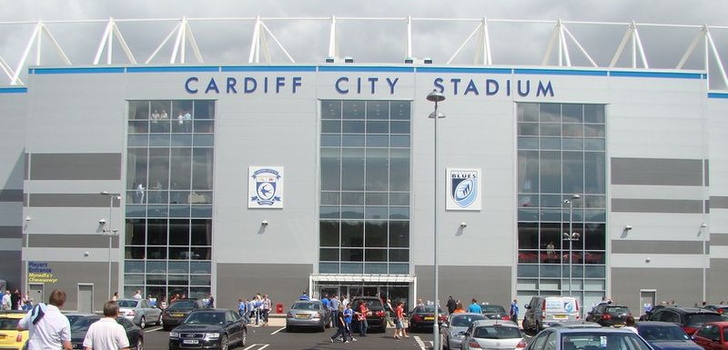
There are a number of footballing minnows whose presence on the world stage has arrived in spurts rather than consistent appearances. Wales is one of those teams, with their achievements often overlooked because of the country’s proximity to England. That proximity has also bred contempt between the two nations, as rivalry between England and Wales has often led to an over-shadowing of on-pitch successes.
As you’d expect from a country geographically located so close to the ‘home’ of modern day football, the Welsh Football Association – which is imaginatively named the Football Association of Wales – is the third oldest in the world behind England and Scotland.
The FAW is responsible for the Wales national football team and has often come up with one major problem on that front – recruiting players. Typically all levels of Welsh international football, from the youth team on through, tend to recruit players from the English football league.
Introduction to Welsh Football
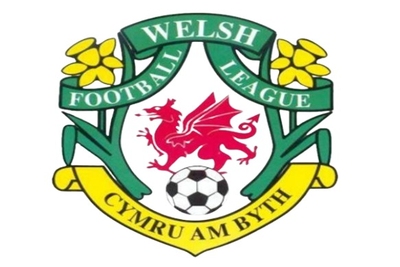 Though the Welsh are a proud bunch and are loathe to admit it, the reality is that the English league is stronger and more competitive than the Welsh league system is. Unfortunately, that also means that players are keener to play for England than they are to line-up for Wales, seeing as though playing for England will give them an increased chance of playing in major tournaments. The Wales side has, after all, qualified for just three major international competitions during its existence; in 1958 they appeared in the FIFA World Cup and in 2016 they made it to the semi-final stage of the European Championship. Ryan Giggs has also seen them through to the finals of the 2020 Euros.
Though the Welsh are a proud bunch and are loathe to admit it, the reality is that the English league is stronger and more competitive than the Welsh league system is. Unfortunately, that also means that players are keener to play for England than they are to line-up for Wales, seeing as though playing for England will give them an increased chance of playing in major tournaments. The Wales side has, after all, qualified for just three major international competitions during its existence; in 1958 they appeared in the FIFA World Cup and in 2016 they made it to the semi-final stage of the European Championship. Ryan Giggs has also seen them through to the finals of the 2020 Euros.
The lack of a decent and competitive league structure means that Wales’ strongest teams tend to play football in the English league system. Both Swansea City and Cardiff City have played in the Premier League at various times during their existence, with Swansea becoming one of the English top-flight’s stalwart club sides. Newport County, Wrexham, Colwyn Bay and Merthyr Town all play in the lower leagues in England, too. Cardiff City are the only non-English side to have won the FA Cup, something that they achieved in 1927, whilst Swansea City qualified to represent England in the Europa League when they won the League Cup in 2013.
Though football is a popular sport in Wales it doesn’t hold the same popularity as the country’s de facto ‘national sport’, which is rugby. This is, perhaps, in part due to the lack of success of the football side on the international stage. Few appearances in major tournaments with zero trophies won is a far cry from the Wales rugby union team appearing in every Rugby World Cup since its inception in 1987 and the country’s 26 Six Nations victories.
Back to the football, though, and this is where you’ll learn about the sorts of stadiums you can find in Wales, the history of football in the country and the way the Welsh league system works. Rugby may be more beloved of the Welsh people, but football is by no means its unpopular cousin with the weird teeth that no one wants to talk to.
Welsh Stadiums
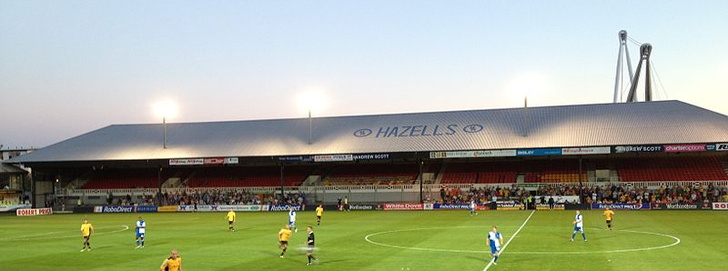
The fact that football plays second-fiddle to rugby in the land of dragons and sheep is reflected in the size and state of the stadiums built over the border. The largest grounds are the like of the Millennium Stadium in Cardiff, which can house of 70,000 supporters but is not used exclusively for football. Rugby union, rugby league and even motor racing and boxing matches have all been held there in the past. Cardiff is the city to head to if you want to see a few different ground, though. As well as the Millennium Stadium there’s also the Cardiff City Stadium, SWALEC Stadium for cricket and Cardiff Arms Park for, you guessed it, rugby.
The rest of the stadiums in Wales offer limited capacities when compared to the home grounds of the club’s who ply their trade in England. There are more grounds with a capacity of less than 10,000 than there are stadiums able to cope with over that amount of visitors. The grounds in the Welsh leagues tend to be basic in their structure and limited in terms of what they offer when compared to the larger and more spectacular grounds in England.
Welsh Leagues

There is only one national league in Wales, which is the Welsh Premier League. It was formed in 1992 in order to allow Welsh teams to play against each other without having to join the English leagues as they had done in the past. Below the WPL is a second-tier of leagues that are split up to cover North and South Wales. They are controlled by different entities, too, as the South is covered by the Welsh Football League and the North and Centre is covered by the Cymru Alliance.
Teams from these feeder leagues can be promoted to the WPL as long as their grounds are good enough. If not then the team that finished second may be considered instead. Beneath the second-tier leagues are more divisions that are split up into regional leagues. It’s complicated, to say the least, but a good way to think about it is that the leagues are broken up into areas in order to allow teams without much money to avoid having to make expensive journeys across the country in order to play matches. All leagues feed into one another for promotion and relegation, meaning that even the lowliest team could theoretically make it up to the Welsh Premier League and become champions of Wales.
Wales National Team
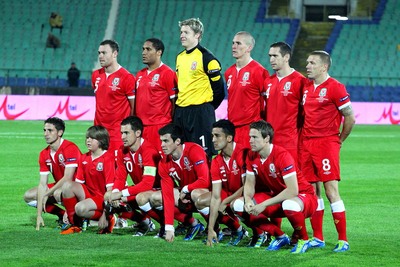
Though the Welsh have never really performed well on the international stage it’s still fair to suggest that they’ve had some excellent players representing them over the years.
Mark Hughes, Ian Rush, Neville Southall and Ryan Giggs have all got a number of English top-flight winners’ medals between them, with Gareth Bale having won the Champions League and Copa del Rey with Spanish giants Real Madrid.
Wales play their home international matches at the Cardiff City Stadium and have done pretty much since it opened in 2009.
Prior to that they played matches at the Millennium Stadium, which is also located in Cardiff.
Key Stats
| Wales National Team Statistics | |
|---|---|
| Year Formed | 1876 |
| Home Stadium | Cardiff City Stadium |
| Stadium Capacity | 32,280 |
| Major Honours | None |
| Current Manager | Ryan Giggs |
| Top Scorer | Gareth Bale (33) |
| Most Caps | Chris Gunter (98) |
| Best Performance at World Cup | Quarter-Finals (1958) |
| Best Performance at European Championships | Semi-Finals (2016) |
| Kit Colours | Red (Home), Black and Green (Away) |
History Of Football In Wales
The first international match played by Wales occurred in 1876 when they lost 4-0 in a match to Scotland.
This was roughly the same time that teams in North Wales towns such as Wrexham and Ruabon began to be formed. Indeed, Wrexham was the focal point for football in Wales for the first twenty years or so of the game being played in the country, as the North took to football more readily than the South which was more concerned with rugby union.
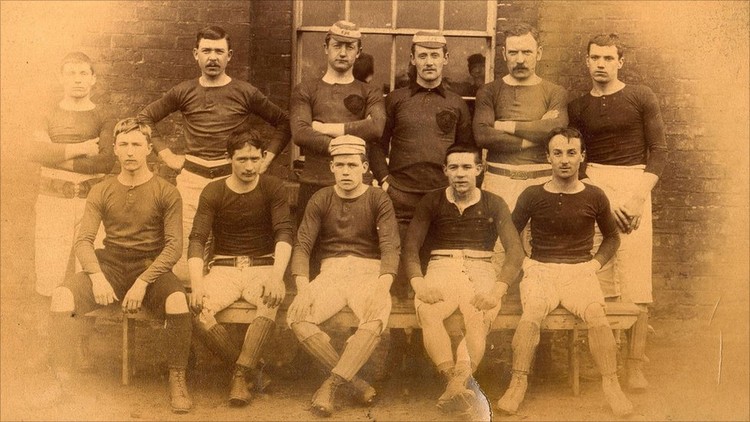
For all that Wales have enjoyed little success on the international stage in major tournaments such as the Euros and World Cup, the Welsh did win the old Home Championships seven times, sharing victory on a further five occasions.
That tournament was played between England, Scotland, Wales and Ireland/Northern Ireland until it was abolished in 1984.
